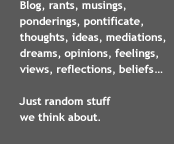
LET ME SHOW YOU A STORY…
October 18, 2012
I heard an interesting discussion on the radio while enduring my lovely Atlanta commute to work this morning. It was about research done on the brain to determine how we make moral decisions.
Now, I don’t want to get all “moral” on you, but I found the topic fascinating and I think the decision making process that was discussed is true, in general.
Interestingly enough, the tools that scientists use to research what influences our brain in the decision-making process are “stories”.
This is one of the stories:
“A trolley is headed toward five people, and the only way you can save them is to hit a switch that will turn the trolley away from the five people and onto a side track. But if you turn it onto the side track, it will run over one person.”
Most people say they would flip the switch and divert the trolley. They say they don’t want to kill anyone, but one innocent person dying is better than five innocent people dying.
Then the story is changed:
“This time, you’re on a footbridge overpass in between the oncoming trolley and the five people. Next to you on the bridge is a big person wearing a big backpack. The only way you can save those five people is to push this big guy off of the footbridge so that he lands on the tracks and he’ll get squashed by the train; you sort of use him as a trolley stopper. But you can save the five people.”
When given this dilemma, most people don’t choose to push the big guy to his death.
The content of the stories is the same but the first one is more abstract where the second one is more visual, and causes the listener to visualize the situation.
Psychologically that makes them very different. Pushing someone to their death feels very different from pushing a switch.
We actually have two complete different moral circuits in our brain: One that is rational and one that is emotional. The first scenario tends to trigger a more rational response, while the second one tapped into the emotional circuit.
So what makes the brain go with the rational mode sometimes, and the emotional mode other times?Emotional responses don’t just pop out of nowhere. They have to be triggered by something. You hear the words describing an event; you picture that event in your mind, and then you respond emotionally to that picture.That’s the key– some situations produce vivid images in our heads. And we’re wired to respond emotionally to pictures. Take away the pictures — the brain goes into rational, calculation mode.
Now this is what I found exciting! At unitOne we consider ourselves to be “storytellers”. We’ve always believed that it is important to TELL a story and that it matters HOW you do it. We use design and video to create visually compelling stories instead of just presenting facts and graphs and charts. And we always try to provide an opportunity for consumers to “see” themselves in a story—a relatable touch point.
This scientific finding supports our theory on the importance of strategic storytelling. For our clients this means a bigger opportunity to reach your customer and make it count.
(based on the article “Why mental Pictures Can Sway Your Moral Judgment by Shankar Vedantam)






